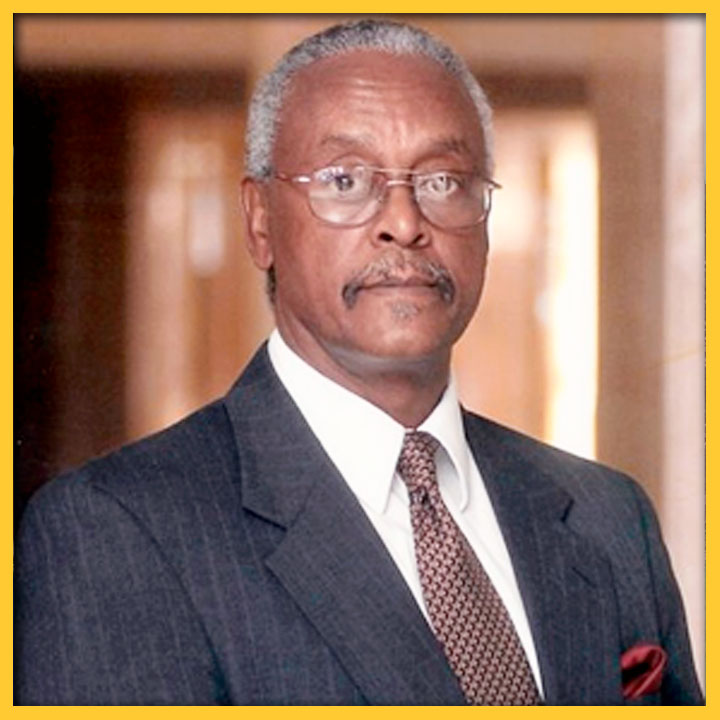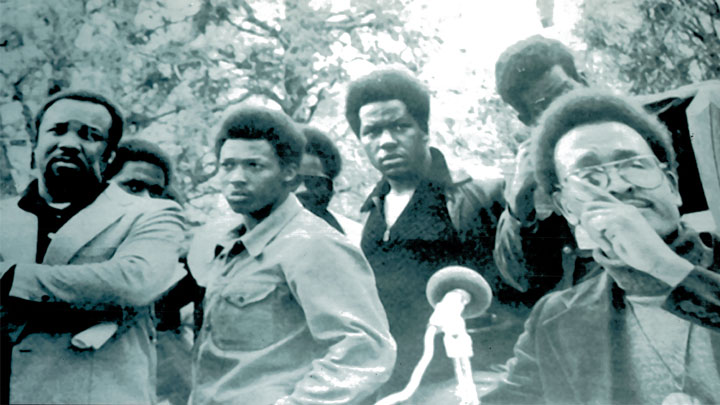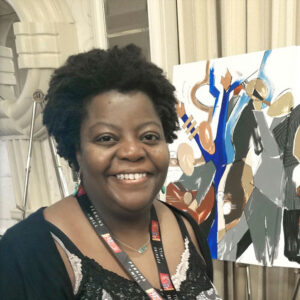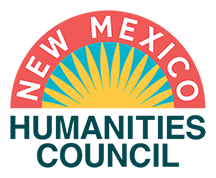
REFLECTIONS ON THE LOSS OF A CIVIL RIGHTS LEADER
The Dr. Harold Baileys of the world should inspire us all to do what we can to leave our communities, our towns and cities – our great state – better places than we found them. While we do our part to create the Dr. Harold Baileys of the future, we should also strive to make sure that the Dr. Harold Baileys of our past and present are never forgotten.
PHOTO CAPTION: Dr. Harold Bailey
SHARE:
On January 13th, New Mexico lost a giant in its civil rights and African American history. Dr. Harold Bailey passed away at the age of 79, leaving behind a legacy larger than his time as president of the Albuquerque NAACP. One would be hard-pressed to think of a major event in New Mexico’s civil rights history that did not involve him to some degree. Yet, so many people I’ve mentioned him to in passing had no idea who he was or the enormous impact he’s had on New Mexico history.
I had the honor of being chosen as the Dr. Charles E. Becknell, Sr. Fellow for the Center for Southwest Research in 2022. I was responsible for archiving the incredible life of Dr. Becknell, Sr., another giant of New Mexico’s civil rights and African American history, and I shared an office with Albuquerque’s poet laureate Hakim Bellamy, who had been chosen as the Dr. Harold Bailey Fellow that same year.
I was already aware of Dr. Bailey, having met with him about help with a housing discrimination issue I experienced some years before. However, watching the growing number of framed honors and awards of different sizes, shapes, and colors build up on Hakim’s side of the office cemented for me how much the work he did for African Americans and people of color in New Mexico meant to so many people.
I was also not surprised to find him mentioned in countless organization meeting agendas, newspaper articles, picture captions, and program souvenirs among Dr. Becknell’s effects. They were constantly brushing shoulders, working alongside each other, to make our great state better than it was when they arrived.
Dr. Harold Bailey was born in McKinney, Texas, on October 15, 1946, but was raised in Albuquerque. He went to Albuquerque public schools and earned undergraduate and graduate degrees from the University of New Mexico. He became the assistant director of UNM’s newly formed African American Studies Program in 1972 with Dr. Charles E. Becknell, Sr. as director and founder.
During his time on the UNM faculty, Dr. Bailey took on racism at UNM head on. He played a pivotal role in the Black Athletic Boycott of 1974-5. With few black faculty and no black administrators or academic counselors, Dr. Bailey was one of the shoulders that UNM Black athletes leaned on about their frustrations about not getting the support they needed to graduate.
In helping lead the UNM Black Athletic Boycott, he put his career on the line along with athletes who stood to lose scholarships and could not get a college degree without them. Bailey was working towards his doctoral degree at the time. In his own dissertation, he mentioned a white professor giving him a B for a class grade even though he earned an A because of his participation in the boycott. The boycott was successful, changing conditions for athletes at UNM, but Dr. Bailey was ultimately blacklisted from being hired at UNM in the future.
Dr. Bailey served the black community in Albuquerque and New Mexico in other ways. He was the president of the Albuquerque chapter of the NAACP in two non-consecutive terms and the director of the New Mexico Office of African American Affairs. In both of those roles, he worked tirelessly to improve health and education outcomes for New Mexico’s African American children and families and increase minority recruitment in the Albuquerque Police Department. Though his time as faculty at UNM was decades ago, he still found the time to visit “The ‘Fro,” (African American Student Services) and made sure students could get a healthy bite to eat in addition to mentorship and support for their studies.
I consider myself blessed to also know a little bit about Dr. Bailey as a husband and father. As a board member of the African American Museum and Cultural Center of New Mexico, I have the pleasure of working with his ex-wife, Patricia Salisbury. It took a while to connect the dots that the “Harold” she mentioned regularly was Dr. Bailey, but I enjoy the stories she tells about him. Up until his passing, he was the kind of man that would make sure that she always had a turkey for the holidays. I was blessed to have a plate of the green chile turkey enchiladas she made with some of it this year and listened to more stories about him from when they both worked at UNM.
Like a lot of “the helpers” Mr. Rogers asked us to look for on his famous TV show, Dr. Bailey didn’t do things for others to be praised; he saw things that needed doing and did them. He openly acknowledged our society’s “wrongs” and put all his effort into turning them into “rights.” We all know people like him who might not ever be mentioned in our history books, but they all should. The Dr. Harold Baileys of the world should inspire us all to do what we can to leave our communities, our towns and cities — our great state — better places than we found them. While we do our part to create the Dr. Harold Baileys of the future, we should also strive to make sure that the Dr. Harold Baileys of our past and present are never forgotten.
Author’s Note: The author chooses not to capitalize “black” or “white” in reference to race as it is a social construct without biological foundation and because she believes it symbolizes equality in humanity.

PASA POR AQUÍ
ADDITIONAL BLOG ARTICLES

SCANNING FOR STORIES
It was a Friday afternoon in November and I was driving on a state road through the hills of the Mimbres Valley. The entire landscape was bathed in a golden hue because the tree leaves had made their full conversion to a bright yellow color just before falling off the branches.

REFLECTIONS ON THE LOSS OF A NEW MEXICO CIVIL RIGHTS LEADER
By Carlyn N. Pinkins, M. A.
“The Dr. Harold Baileys of the world should inspire us all to do what we can to leave our communities, our towns and cities – our great state – better places than we found them. While we do our part to create the Dr. Harold Baileys of the future, we should also strive to make sure that the Dr. Harold Baileys of our past and present are never forgotten.”

RUDOLFO ANAYA: CATCHING CULTURES IN BLESS ME, ULTIMA
By Richard Wayne Etulain
Anaya greatly expands the cultural contributions of his novel by combining the usual (Bildungsroman—growing up theme) with the unusual (complex, diverse New Mexico Hispanic culture)…
SHARE:
DISCLAIMER:
Any views, findings, conclusions or recommendations expressed in this blog post/article does not necessarily represent those of the New Mexico Humanities Council.
ABOUT THE AUTHOR:

CARLYN N. PINKINS, M. A.
Carlyn N. Pinkins, M. A. is a doctoral candidate in the Department of History at the University of New Mexico. When she's not doing editorial work at the New Mexico Historical Review or working at the New Mexico Humanities Council, she enjoys playing Geeks Who Drink trivia, cheering on Liverpool FC and New Mexico United, and zipping around town on her scooter or motorcycle.
